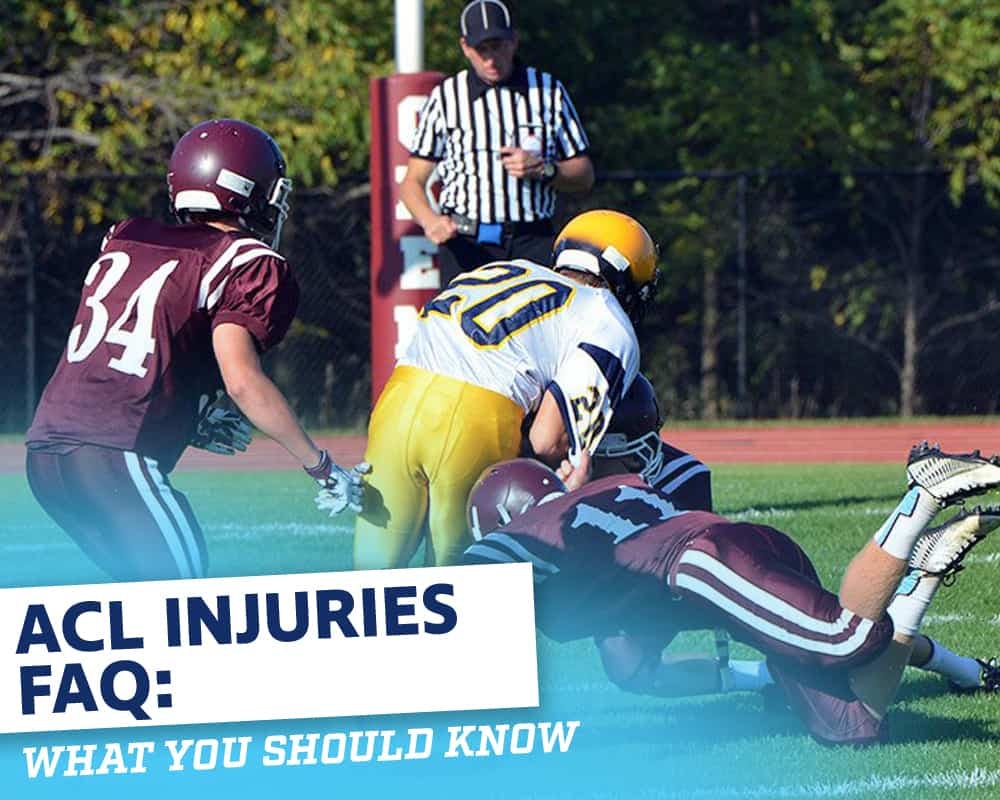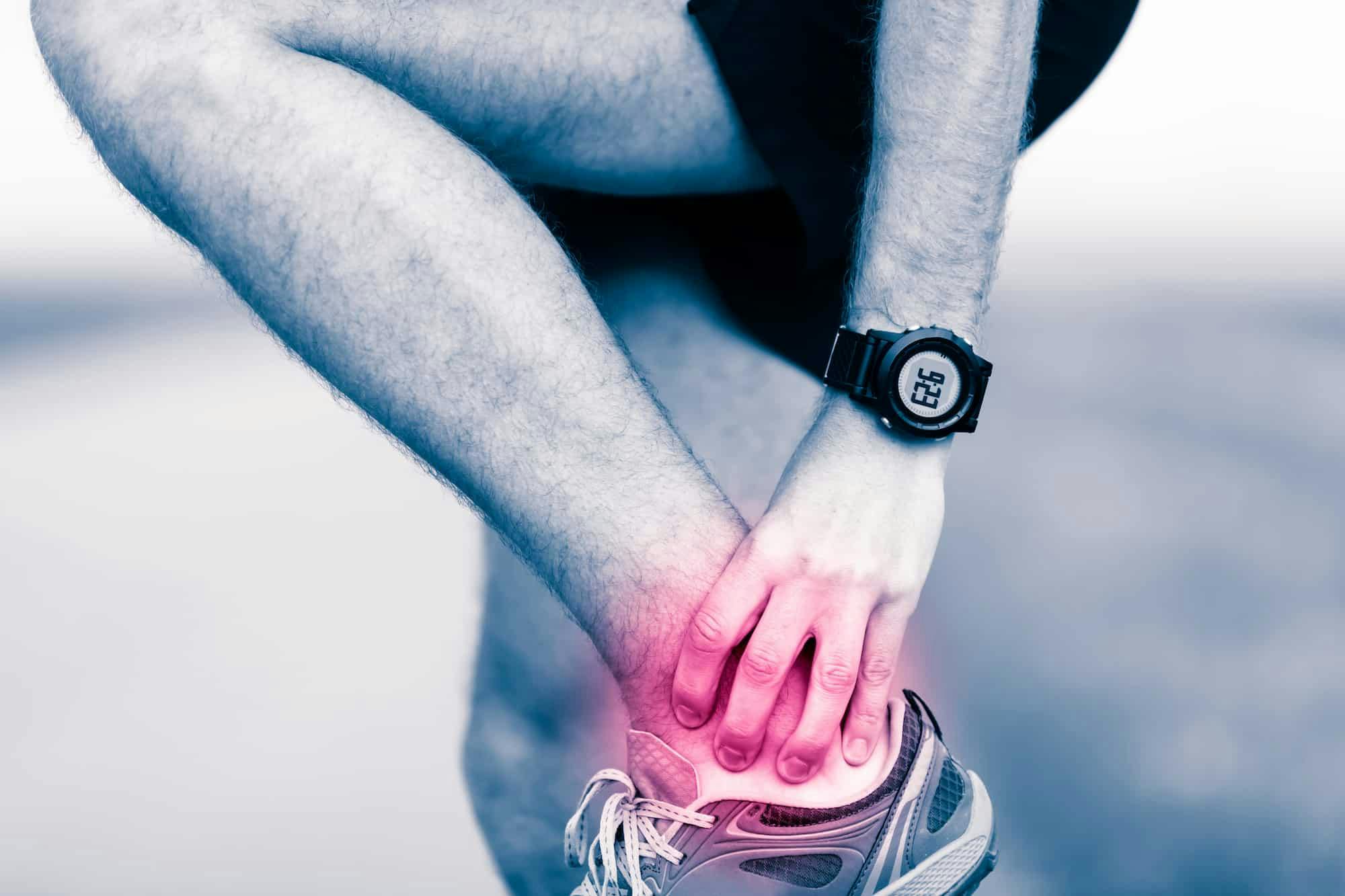- Blog
ACL Injuries FAQs
Posted on 12-17-2025 in ACL & Knee by Dr. Chris O'Grady

Posted on 12-17-2025 in ACL & Knee by Dr. Chris O'Grady
Estimations indicate that each year in the United States 200,000 ACL tears occur, with a majority of those tears requiring reconstructive surgery. Furthermore, about half of those ACL tears are accompanied by a torn meniscus, which is the cartilage that acts as the shock absorber between the tibia (shin bone) and the femur (thigh bone), and/or injuries to other ligaments. Common symptoms of a torn ACL include knee instability, swelling, and pain.
What is the ACL?
The Anterior Cruciate Ligament (ACL) and the Posterior Cruciate Ligament (PCL) are located inside the knee joint. The ACL and PCL form an ‘X’ behind the kneecap (patella), with the ACL resting in front of the PCL. Both of these ligaments are responsible for controlling the back and forth motion of the knee joint; however, the Anterior Cruciate Ligament is responsible for stabilizing the knee. In addition, the ACL is responsible for preventing the tibia from sliding forward on the femur. The ACL provides the knee with stability while an individual pivots or twists. This ligament is critical because without it, performing any kind of rotational activity is extremely difficult, particularly when it comes to playing sports like soccer and basketball.
What Does It Mean When Someone Has a Torn ACL?
An ACL tear is among the most common knee injury reported. This injury involves tearing of the fibers making up the ACL. Sometimes, the entire Anterior Cruciate Ligament is torn; whereas, other times it is just partially torn.
What Causes the Anterior Cruciate Ligament to Tear?
The ACL may tear due to any movement that results in a twisting action of the knee (i.e., sidestepping, pivoting or cutting/changing directions combined with deceleration). Activities that may lead to twisting of the knee include a slip and/or fall, any quick movement while playing sports or jogging/running on an uneven surface. Initially, an individual often hears or feels a ‘pop’ accompanied by a sudden onset of pain. It may be difficult to walk. Significant swelling can occur resulting in stiffness of the knee. A torn ACL causes the knee to give out or buckle, especially with certain activities like pivoting or cutting. Left untreated, the problem may become so severe that simple activities like walking will cause episodes of instability to occur.
Are There Any Risk Factors Related to Anterior Cruciate Ligament Tears?
Yes, in particular, young women are more likely to tear their ACL than men are. This has been attributed to differences in hormones as well as differences in mechanics during sporting activity.
Can ACL injuries be prevented?
The main focus in preventing knee injuries is concerned with improving the mechanics of jumping, landing, and pivoting during sports. This was initially noted to be beneficial to young women but is now accepted as preventative in both men and women who exhibit poor mechanics. Although knee braces may be protective in the post-operative patient, they have not definitively been shown to prevent ACL injuries.
What Type of Doctor Treats an ACL Injury?
Individuals should visit an experienced Orthopaedic surgeon who specializes in treating sports injuries to bones, ligaments, joints and tendons.
Over Time, will a Torn Anterior Cruciate Ligament Heal Itself?
Regrettably, the ACL is unable to heal itself. To avoid additional injury, proper medical treatment is required.
What Happens During an ACL Reconstruction Surgery?
A torn ACL cannot be reconnected; therefore, a tendon is used as a substitute for the Anterior Cruciate Ligament. Usually the patient’s hamstring or a portion of his or her patellar tendon is used as the ACL replacement; however, donor tissue may also be utilized.
ACL reconstruction surgery is an outpatient procedure at O’Grady Orthopaedics; therefore, patients will need to bring a driver with them on the day of their procedure.
The Surgical Procedure
Directly following an ACL reconstructive surgery, patients are given crutches to use. These crutches may be used up to 3 weeks. There will also be a knee brace which provides some stability while the muscles strengthen.
Does Every Patient Need Physical Therapy?
Yes, physical therapy is an integral part of treating a torn Anterior Cruciate Ligament. Within the first day or two of surgery, patients will have their first physical therapy session. Initially, patients begin physical therapy exercises designed to improve their range of motion. Once pain and inflammation decrease, strengthening exercises will be incorporated into the patient's treatment plan. Eventually, the majority of Dr. O’Grady’s patients progress back to their full activity level and can return to their normal daily activities (including sports).
By beginning physical therapy right away after surgery, the risk of post-surgical complications is decreased. Moreover, early and appropriately aggressive therapy allows individuals to regain their full range of motion, faster and have less pain.
How Long Does It Take to Recover from ACL Reconstruction Surgery?
Generally, patients need approximately 6 months to fully recover: However, there are instances when a patient needs up to 12 months for his or her knee to return to normal. This is especially true with elite contact athletes.
Dr. Chris O’Grady is dedicated to helping his patients regain their mobility and return to their everyday activities as soon as possible. If you have sustained an injury or are having symptoms of pain and instability contact O’Grady Orthopaedics and schedule your appointment today.

With summer in full swing and children taking advantage of more time to participate in sports-related or other outdoor activities, it’s essential to be mindful of injury prevention while encouraging their interest in activities that don’t involve screen time!

May is National Arthritis Awareness Month, and of the more than 100 forms of this painful condition, many can affect the ankle. In fact, almost half of people in their 60s and 70s have arthritis of the foot and/or ankle, but not all of them have symptoms.

Springtime in North Florida is the perfect season for gardening, but hours spent planting, pruning, and digging can take a toll on your body. At North Florida Bone & Joint Specialists, we often see patients with gardening-related injuries affecting the hands, upper extremities, shoulders, and knees. Whether you're a weekend hobbyist or an avid green thumb, practicing proper ergonomics can help ensure you stay injury-free while you enjoy your time outdoors.